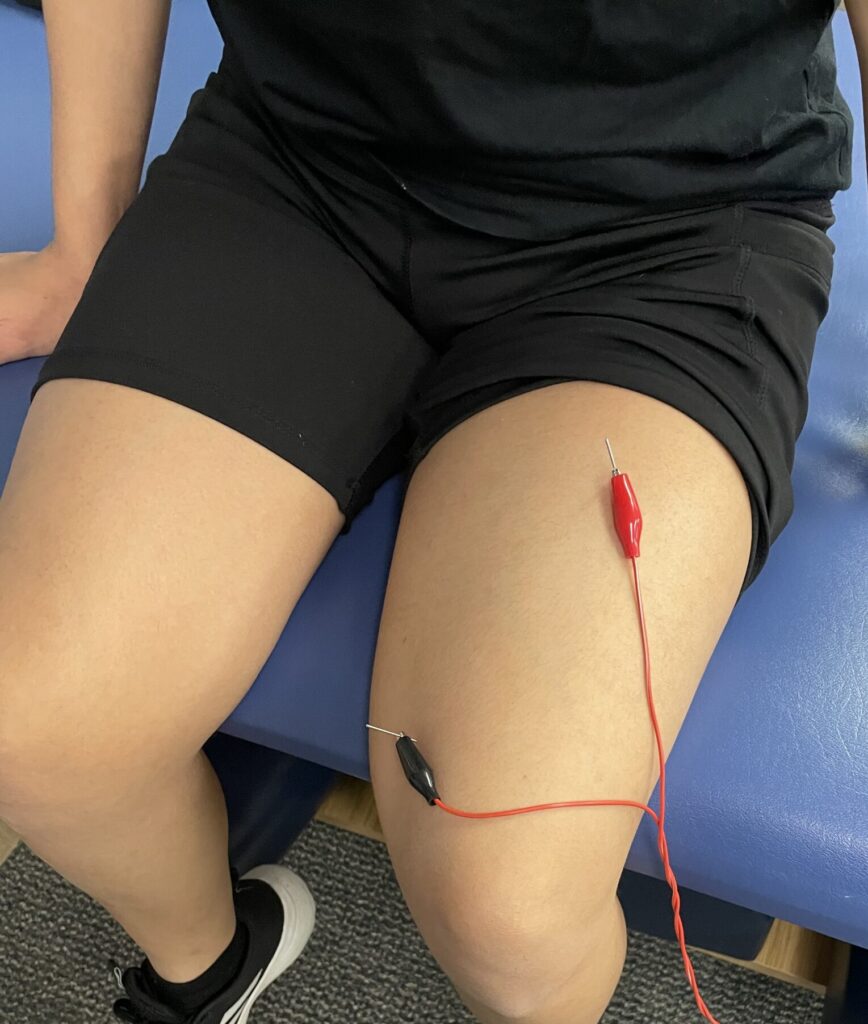Dry needling
Dry needling is a procedure that uses thin needles to target trigger points in muscles, releasing tension and promoting pain relief. It can enhance muscle function, improve mobility, and accelerate the healing process. This can be performed with or without electrical stimulation.
FAQs
Dry needling and acupuncture use similar needles but differ in practices and providers. Acupuncture, Eastern-based, treats musculoskeletal pain and other systems by licensed acupuncturists. Dry needling, Western-based, targets pain patterns and muscle tissue to reduce pain and improve movement. It typically complements broader physical therapy treatments and isn't a stand-alone procedure.
Muscle relaxation
Increased blood flow
Reduction of inflammation
Stimulation of healing response
Improved flexibility and range of motion
Enhanced nerve communication
Activation of natural pain relief mechanisms
Discomfort during needling is possible. Sometimes, you won't feel the needle entering due to its small size, but other times, you may experience a prick. When the needle reaches the trigger point, it can be painful and may cause a twitch response. After the procedure, you might feel tightness or soreness around the insertion site, but it's crucial to continue moving. If you experience excessive muscle soreness, you can use heat or alternate ice and heat for relief.
Though immediate change (pain level, soft tissue mobility and range of motion) is expected immediately after treatment, typically, lasting changes require 2-3 visits. Initially, muscles may relax, but they can revert to old patterns of pain and dysfunction. A cumulative effect occurs with multiple treatments as neuro-muscular patterns are retrained. After a certain number of treatments, the pain cycle breaks, and proper muscle and nerve function are restored.
After dry needling, move like usual and stay hydrated. Avoid intense workouts, but gentle movements like walking are beneficial for blood circulation. If you experience excessive muscle soreness, you can use heat or alternate ice and heat for relief. While the traditional approach involves heat and gentle stretching post-treatment, it's not mandatory. Avoid overstretching to prevent further inflammation and prolong healing time.
Common side effects of dry needling include temporary soreness, bruising, mild bleeding, dizziness, or fatigue. Severe side effects like infection or nerve injury are rare, especially when performed by an experienced practitioner like Dr. Donna, who has been practicing dry needling since 2015 without any reported severe complications.
Those with a fear or strong aversion to needles; people with certain medical conditions or bleeding disorders that increase the risk of bleeding or infection.
Individuals with skin infections or open wounds in the area to be treated; Pregnant women; recent surgery (<12 wks.) over the area to be treated unless cleared by the surgeon.

